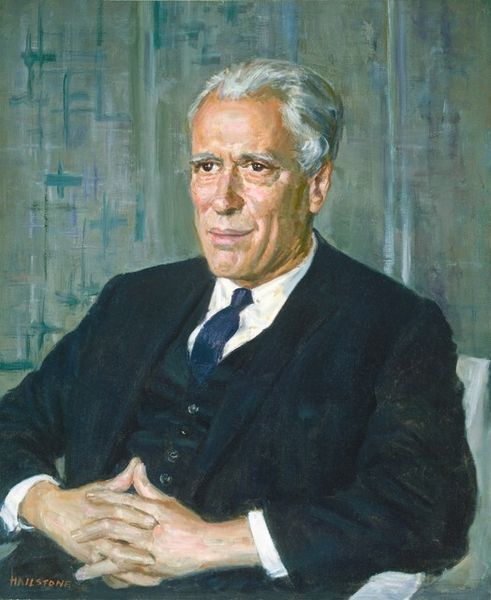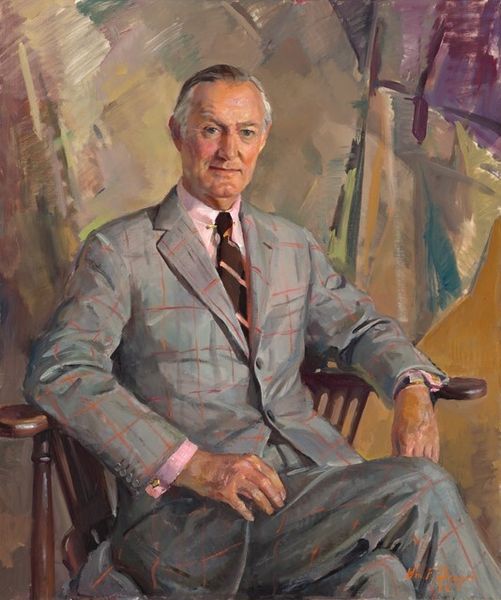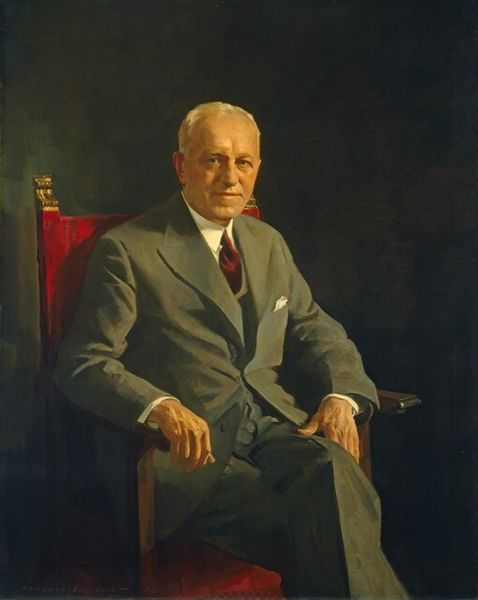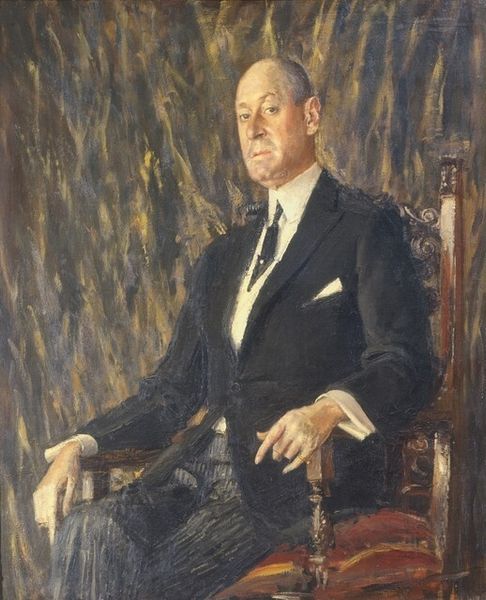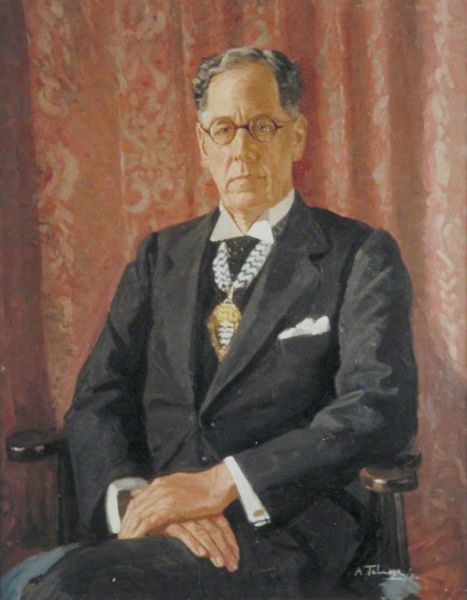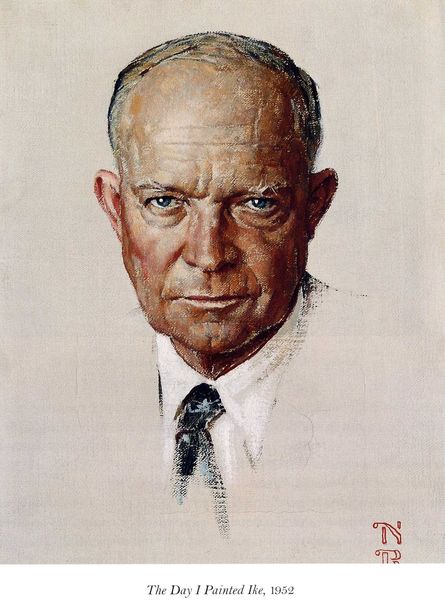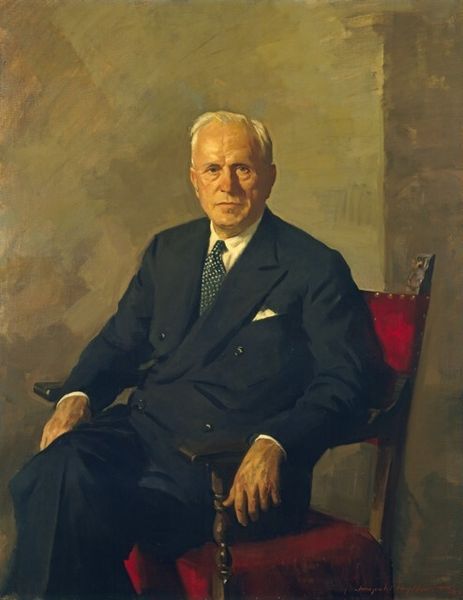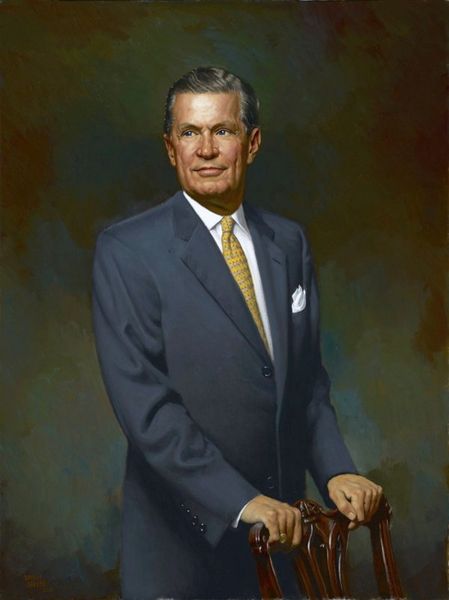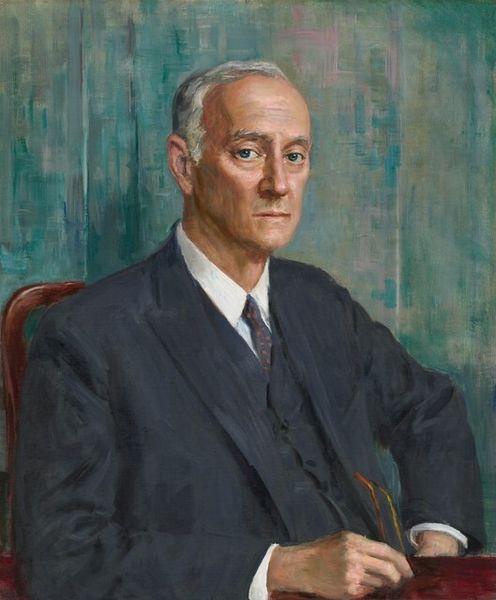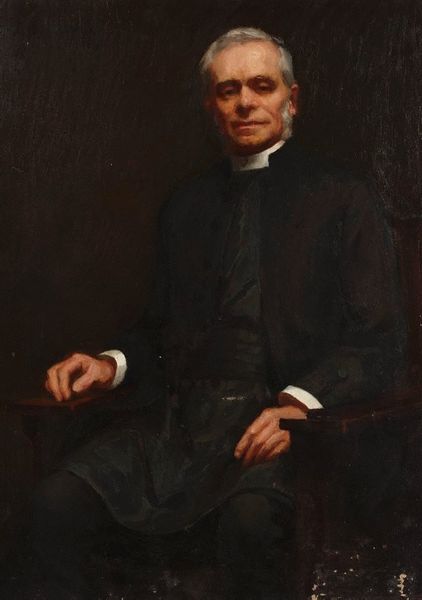
painting, oil-paint
#
portrait
#
portrait
#
painting
#
oil-paint
#
realism
Copyright: Barrington Watson,Fair Use
Editor: This oil painting is entitled "Sir Norman Washington Manley, Prime Minister of Jamaica" dating back to 1900, crafted by Barrington Watson. I'm struck by how solid and formal he appears. What do you make of it? Curator: Well, I immediately consider the means of production. Watson, as a Jamaican artist painting the Prime Minister, engages in a fascinating power dynamic. Think of the materials: oil paint, canvas. These were globally traded goods, historically linked to colonial economies. How do those histories manifest in a portrait of a post-colonial leader? Editor: That's interesting. It brings a new depth to the piece by connecting the materials to global economic flows and their effects on the country's social landscape. I hadn't considered the material implications of that. Curator: Exactly! And note how Watson uses those materials. It’s a fairly conventional style, a "realistic" portrait, perhaps intended to project authority. How does that style either support or challenge existing power structures of the time, given the recent history? Editor: So, Watson is deliberately employing this recognizable style while consciously grappling with themes of political representation? The art becomes part of the conversation of Jamaica defining itself on the world stage? Curator: Precisely. The labor, the consumption of materials, and the portrayal all intersect to comment on Manley’s role within the historical and ongoing circumstances. The painting isn't just an image, it's evidence. Editor: Thinking about the context around the materials has definitely changed my view on the painting; it has prompted me to look beyond the portrait and consider the factors of colonial economy. Thank you. Curator: My pleasure! The power lies not only in the image, but in understanding how that image was materially and politically made possible.
Comments
No comments
Be the first to comment and join the conversation on the ultimate creative platform.

